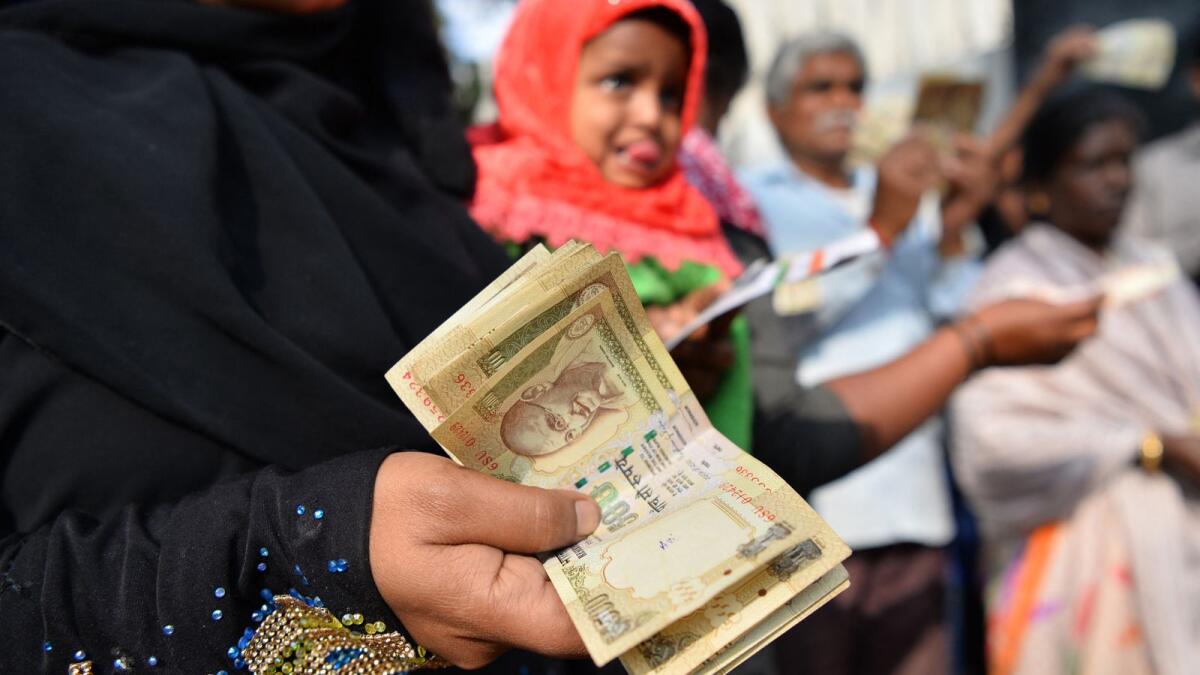The Indian rupee faced a decline on Thursday due to the increased demand for the dollar from importers for month-end payments and the likely unwinding of long positions after failing to hold above a key resistance level at 83.50. The currency was trading at 83.6850 against the US dollar, down 0.1 per cent from its previous closing rate of 83.5925. Asian currencies showed mixed trends while the dollar index was down 0.1 per cent at 100.8 during the same period.
Importers, including oil companies, were seen purchasing dollars, with a large foreign bank consistently bidding for dollars, possibly unwinding some long bets on the Indian rupee. Despite strong inflows in the debt market, robust dollar demand in the range of 83.45 and 83.50 has restricted the currency’s gains, according to a trader at a private bank. The Indian rupee had recently reached a near three-month peak of 83.48, with overseas investors pumping in about $10 billion in Indian equities and debt throughout September, the highest monthly inflow since last December.
Amit Pabari, the managing director at FX advisory firm CR Forex, highlighted that the dollar-rupee pair opened lower over the week but rebounded as importers rushed to fulfill month-end dollar demand, resulting in a higher close for USD/INR. The focus on Thursday was on Federal Reserve Chair Jerome Powell’s remarks, scheduled later in the day, which could provide insights into the future direction of policy rates. Powell’s speech, along with other policymakers’ statements, could impact currency markets.
Overall, the Indian rupee faced pressure against the US dollar on Thursday, driven by increased dollar demand from importers and the unwinding of long positions after failing to sustain above 83.50. The currency traded at 83.6850 against the greenback, down 0.1 per cent from its previous closing rate. Asian currencies exhibited mixed trends, while the dollar index was marginally lower at 100.8 during the period. Importers, including oil companies, were actively purchasing dollars, with a major foreign bank bidding consistently for dollars, likely linked to unwinding long bets on the Indian rupee.
Despite strong inflows in the debt market and recent highs of 83.48, dollar demand between 83.45 and 83.50 has capped the Indian rupee’s gains. Overseas investors poured in about $10 billion in Indian equities and debt in September, the highest monthly inflow since December last year. Amit Pabari of CR Forex noted that the dollar-rupee pair opened lower for the week but rebounded due to importers rushing to meet month-end dollar demand. The market’s focus was on upcoming remarks from Federal Reserve Chair Jerome Powell and other policymakers, which could impact the future policy rates.
In conclusion, the Indian rupee faced downward pressure against the US dollar on Thursday, prompted by heightened dollar demand from importers and the unwinding of long positions as it failed to hold above the key resistance level at 83.50. The currency traded at 83.6850 against the greenback, down 0.1 per cent from its previous closing rate, while Asian currencies showed varied trends. Strong dollar demand within the 83.45-83.50 range, despite robust inflows in the debt market and recent highs, limited the Indian rupee’s appreciation. Investors awaited Federal Reserve Chair Jerome Powell’s remarks for insights into future policy rates, with potential impacts on currency markets.











